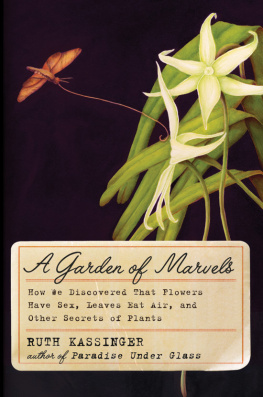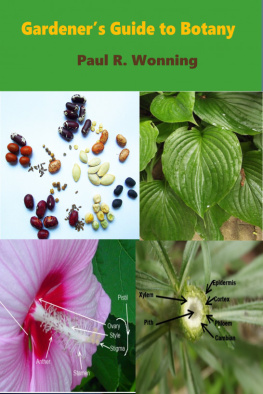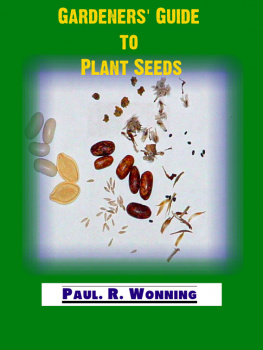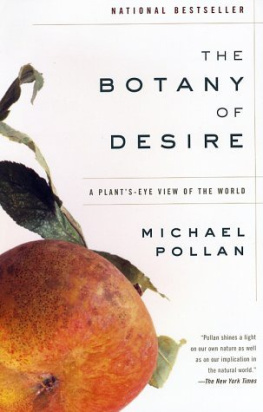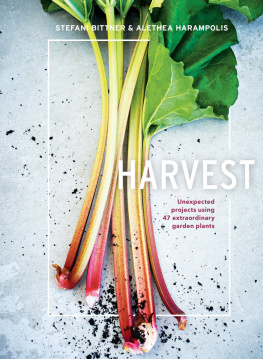To Kenneth Greif, mentor of a lifetime
Contents
T his book was born of a murder, a murder I committed. It was not my first, but I have some hope it will be my last. Since I never set out to killquite the contraryI suppose I am guilty only of negligent homicide, or possibly mere criminal negligence. Still, I feel deeply culpable. All I can do is plead ignorance, and say that this particular death was a life-changing event for me (as well, of course, for my victim). Possibly, since you have this book in your hands, the tragedy will save a few lives I will never know.
The deceased in this case was a twelve-year-old guest, a permanent resident, really, of my household. She was a lovely, graceful creature about five feet tall, and a particular favorite of my family. Kam Kwat she would have been called in Cantonese, had she lived in her native land. As it was, since we live just outside Washington, D.C., we knew her as the kumquat tree. In the summer she lived outdoors on our patio in a cobalt-blue pot; from late fall through winter and into spring she lodged in the small conservatory attached to the side of our house. I carried out the murderand I cant help feeling her death deserves that namein the conservatory, with the clippers.
The facts are as follows. I brought my kumquat tree home as a three-year-old, an immigrant from a nursery nearby. She was a slender thing, and her gracile limbs, covered in deep green, oval leaves, lifted upward and curved slightly outward, as if their weight were just a bit more than her youthful frame could bear. The following spring she blossomed, flushing with tiny, white, and fragrant flowers. In a week or so, the flowers fell, revealing dark green beads at their bases. These gradually expanded and finally ripened into golden-orange fruits the size of large grapes. Plucked off the tree and eaten in one bite, the fruit had a slight bitterness redeemed by the sweetness of the delicate peel. Even our terrier liked them, and ate any that dropped to the floor.
Every year for five years, the tree grew a few inches taller, and her limbs branched again and again, until she wore a dense and glossy crown. At nine, though, she stopped growing. I was relieved, actually, since the conservatory is crowded in winter after I bring in the orange, lemon, fig, coffee, bay laurel, loquat, and banana trees, and a host of potted herbaceous plants. The following winter, however, she began to decline. The lower leaves on her branches turned yellow and, one after another, fell to the stone floor with a delicate rattle. By early spring when I moved her outside again, she held skinny, bare arms to the sky; only their very ends were leafy, as if she were wearing nothing but green gloves. Was this a watering problem? Im a lackadaisical gardener, so I tried to be more conscientious with my watering can. Was she hungry? I sprinkled her soil with fertilizer pellets. I repotted her into a larger container.
Nothing helped. I looked to Ted, my husband and a more accomplished gardener, for inspiration. We have a strict division of labor in our household: I take care of the indoor plants and Ted tends to the outdoor ones. Years ago, he planted a crape myrtle just outside a living room window, and early every spring, before its new leaves appear, he prunes its multiple trunks back to windowsill height. About the same time, he razes the hedge of Knock Out rosebushes that line our driveway, reducing them to a two-foot-high stubble. Miraculously (to my mind), within weeks all the plants leaf out. By mid-May, we have rosebushes hectic with red blooms. In July, the crape myrtle is weighted with magenta flowers that fill the window frame, just where we can enjoy them. There seemed to be a lesson in this for me. I broke out the clippers and gave my kumquat a thoroughreally thoroughpruning. Then I put her outside in the sun, and waited.
Her branches turned brown and brittle. I had killed her.
Why? Why did she succumb when the crape myrtle thrived? It occurred to me I had run up against some fundamental biological difference between crape myrtles and kumquat trees, but I had no idea what it was.
This failure brought to mind other local botanical mysteries. Some friends up the street had a beautiful hickory. During a construction project, they added a deep layer of soil to their yard, and although they constructed a tree well around the trunk, the tree died. Why? Why does the vibrant green fescue in our lawn inevitably lose ground to scraggly, tough crabgrass? Why do houseplants, so beautiful and vigorous in the garden center, decline after a few weeks at home, even if I tend to them like a robin doting on her newly hatched chicks? Most immediately, I had two tree-size dracaena, those foolproof foliage plants ubiquitous in offices and shopping malls, whose roots had grown through the drainage holes in their pots and now circled their saucers. Could I safely prune these ugly outliers? I knew the basic rules of caring for indoor plantsdrain any water in plant saucers, let the top inch of soil go dry before watering, apply fertilizer in springbut I realized I understood very little about how roots, stems, leaves, and flowers function, what physical and chemical processes make them work. In other words, I knew almost nothing about the physiology of plants.
How could it be that I knew so little? Heres one excuse: Im a suburbanite, and live in a house with a yard the size of a carpet remnant. Yes, where I live oak trees drop acorns, daffodils bloom, and grass (or crabgrass) grows. But vegetation here is a minor component of a landscape dominated by man-made features like houses, streets, and cars. Until I took up indoor gardening, the only thing I pondered about plants was which ones to eat.
Another excuse: Im a humanities person, and went through college and graduate school without taking a single science course. I was so inattentive in my high school science classesI was to be a poet, you seethat I was unprepared for even the basic college-level biology course. I came to regret those academic choices, and over the years have learned enough physics and chemistry to write books for young adults on the science and history of inventions and materials. But of plant science, I knew almost nothing. Heres yet another excuse: High school biology textbooks then (and now) usually devote only a chapter or two to plants, and largely as a warm-up to what is the presumably more interesting subject of animal biology.
A few botanical facts did reverberate faintly in my brain, like the half-remembered lyrics of pop songs I listened to in the same era. The words xylem and phloem I recalled because they regularly appear as answers to clues in crossword puzzles. I even knew that both are tubes in a plant for transporting water and... and... well, and something else. Pistils and stamens are the male and female parts inside a flower, although which was which I had forgotten. Photosynthesis, I knew, involves taking carbon dioxide out of the air while simultaneously producing oxygen. How that transformation occurs, I couldnt say. I must have daydreamed through Mrs. Millers explanation in ninth-grade biology.
When in middle age I began caring for a collection of indoor plants, I turned to gardening books and hang tags for the practical advice I needed. I was moderately successful gardening in this way, although, as I say, Kam Kwat was far from my first failure. It now dawned on me that blindly following instructionsor acting on my own mistaken analogieswithout any insight into the science of plants might be part of my problem. Maybe if I knew how a kumquat differs, physiologically, from a crape myrtle, I might avoid another murder. I started off to educate myself, hoping to become a better, or at least a less lethal, gardener.

